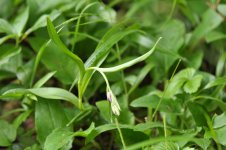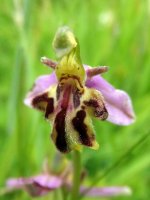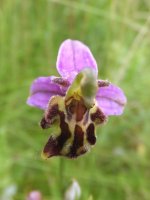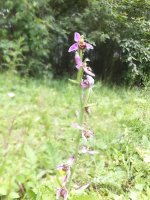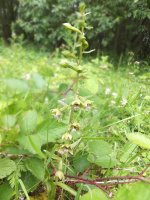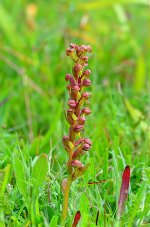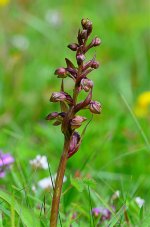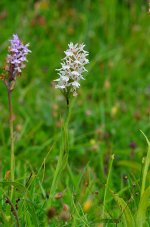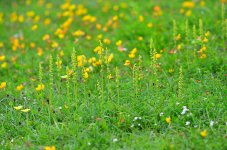Red Helleborine update:
This year, at two sites, seven plants flowered (four in Bucks, three in Gloucs), but only one remains at each site.
The Bucks plant is quite pathetic, having five flowers (it was the weediest one of the four, but managed to escape the molluscs), the bottom one already browning, the top two in bud still.
The guided walk does not allow visitors into the fenced area to see the plant, so photographs had to be taken from 15 feet distance outside.
The Gloucs one is one of approximately 25 plants in the compound this year. The maximum they have had there (flowering and non flowering) is c40. The Chilterns ones are in a very small patch, with no plants having appeared outside of this area for a number of years (there used to be a couple under a nearby tree). All of those plants are clones of the same parent, so its presence here is very precarious. Shortly after its discovery there were c60 flowering spikes here.
Hampshire site has had no records of flowering or non flowering plants since 2007.
My advice to those wishing to see RH in this country - it isn't really worth it. The experience is not a good one, seeing poor quality plants from a distance in zoo-like conditions.
No proper scientific study has ever been carried out on the exact requirements for the species, and while the RH project is well meaning, there are too many unknowns and too little time to save it IMHO.
Funding has run out for Kew to develop propagation methods, so this will not be another Lady's Slipper.
There are parallels between this species and my pet, the Ghost, if I don't find one of those by 2020 I'm officially giving up looking!!
Still, at least they are being replaced by northward moving species like Sawfly Orchid.




